Inside the Stateside Shoe Stories of 3 American Makers

Forces geo-political, environmental, epidemiological and economic have made close-to-market production practical. But for footwear makers Origin, Shloop and Red Wing Heritage, their “Made in the USA” journeys bear distinct struggles and storylines.
Origin
With a fire for bringing back the U.S. apparel and footwear manufacturing jobs he saw going overseas in the late 1990s, Pete Roberts opened Origin in Farmington, Maine in 2013.
More from Sourcing Journal
New Balance Planning $70 Million New England Manufacturing Facility
Missouri Garment Manufacturer Evolution St. Louis Sued for $850K
“As we started to think about what our future looks like as a brand—denim and boots, they’re the two hardest products to build,” Roberts told Sourcing Journal. “So we had to build denim and boots.”
Previous work reinventing the gi, Brazilian ju jitsu’s kimono-style garb, gave Roberts and company experience “weav[ing] durable fabric” and the confidence to try to build a fully USA-made and -sourced clothing and shoe company.
“We applied everything we learned from jujitsu to make ultra, ultra-durable jeans, and we took that same knowledge into footwear,” Roberts said.
Today, Origin sources all of its leather from Wisconsin’s Seidel Tanning Factory and its denim from Georgia’s Mount Vernon Mills for production in its Farmington, Maine factory employing nearly all of the company’s 600 workers.
Farmington was a hotbed for footwear manufacturing until the offshore exodus and particularly suffered when Bass Shoe left in 1998.
Roberts was lucky to find three local “old timers” who could reverse the “loss of knowledge” resulting from the manufacturing slump and help “us on the journey of making footwear.”
Made in MAINE, by AMERICANS#madeinusa #origin #boots pic.twitter.com/aCaUv8dT8H
— ORIGIN (@ORIGINBJJ) January 20, 2023
Building the Farmington factory also meant introducing a cross-training workforce model that makes each staffer “part of the entire process,” Roberts said.
Roberts said that while factors like the trade war with China, Covid-19, and a rising focus on supply chains and sustainability make domestic production more attractive, economics alone don’t necessarily make the case.
“I don’t think it’s going to be ever become cheaper because manufacturing follows cheap labor,” Roberts said.
Producing in the U.S. can be only cost-competitive when companies educate consumers that it’s in their pocketbook’s interest to buy American-made, he said.
“I think when a consumer understands why it’s important and how the product should exist in their lifestyle, they’re gonna see it’s much cheaper to buy a $120 pair of jeans every five years, versus a $60 or $70 pair of jeans every year,” Roberts said.
Roberts said recent enthusiasm for Made in the USA has led well-known brands to want to manufacture at his Farmington factory. He gives the cold shoulder to any company that has off-shored in the past.
“What I’ve said to those brands is, ‘you abandon the American worker and now you want to use us for your slick marketing?’ and I’ve turned them down,” said Roberts, who believes they “should have done the right thing” and “not chase greed.”
That said, Origins will partner with brands if Roberts approves of their “shared values.”
Roberts hopes a documentary about Origin and the Farmington community, which he wants to “create a revolution of sorts,” will wind up on Netflix this year.
“I don’t care which side of the [political] aisle you’re on, I think it really does resonate with everybody,” he said.
Red Wing Heritage
Like many companies, Red Wing Boots saw most of its production and jobs migrate offshore in the late 1980s.
Parts of the production line remained behind, however, including a launch born from the popularity of the work boot as fashion statement in Japan and Europe in the 1970s.
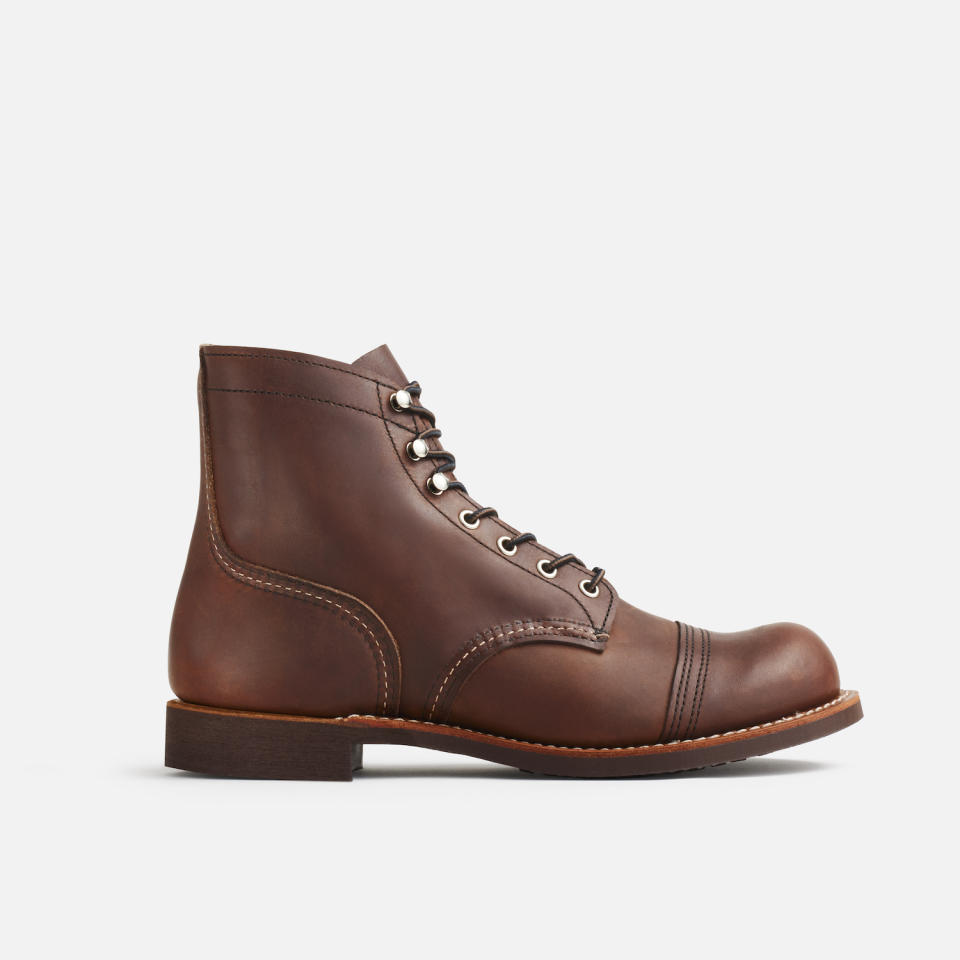
Red Wing’s sudden status as a style symbol at the time was completely “unintended,” Mike Larson, product design and development manager for Red Wing Heritage, told Sourcing Journal. “It’s similar to Levi’s, which was workwear and now people wear it every day.”
Red Wing Heritage became something of a designer workboot, crafted for the discerning fashion sense of the European wearer and the exacting detail expected by the Japanese. Its production never left American soil, and by the early 2000s, Larson said, the Heritage line became a brand unto itself.
“All of our products are inspired by the archives. We have a rich history of archival footwear spanning 118 years, and our designer looks in the archives, finds vintage boots, and we basically recreate them,” Larson said. “We’re still using the same factory and S B Foot Tannery here in Red Wing, and in many cases the same machines. We’re reproducing to the same standard and quality of back when they were originally created.”
Red Wing also has an owned-and-operated factory in Missouri and a partner facility in Arkansas.
“To be vertically integrated in one town could be a risk to us, because if a tornado came through… it’s a risk,” Larson said. “So we’re one of the very few footwear companies in the world these days that owns a tannery and a factory in the same geographical area.”
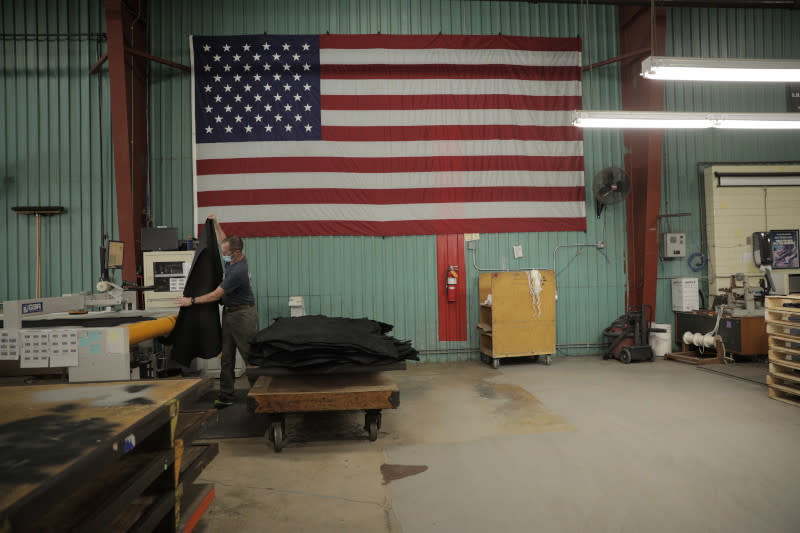
Larson said Red Wing Heritage sources its materials from the U.S. as much as possible, scoring in the high 90 percent of FTC requirements to declare “Made in the USA.”
“The only time we go off-shore for Heritage is if there is no possible place in the U.S.,” Larson said, adding that the line complies with the Berry Amendment.
Today, of the nearly 2,000 global workers employed by Red Wing, 432 work in the town of roughly 16,000 in the state’s southeast corner.
Finding workers for the unionized factory and tannery in Red Wing is a challenge, Larson said.
“It’s very complex and dynamic, with a lot of nuance,” Larson said. “We’ve worked with other union and non-union factories in the U.S., and there is a different dynamic, but we make it work.”
The modern skillsets required from a tight local talent pool creates another hurdle.
“Back in the 1980s, 90s, early 2000s, there was a waiting list of people getting into the factory—it was the place to work in town. Now it’s a different story,” Larson said, adding that Red Wing’s unemployment rate is the 12th lowest in the nation. “And because we are a craft manufacturer… that means the human element is the most essential ingredient for our manufacturing process.” It’s “the person behind the machine that really puts quality into the boot,” he added.
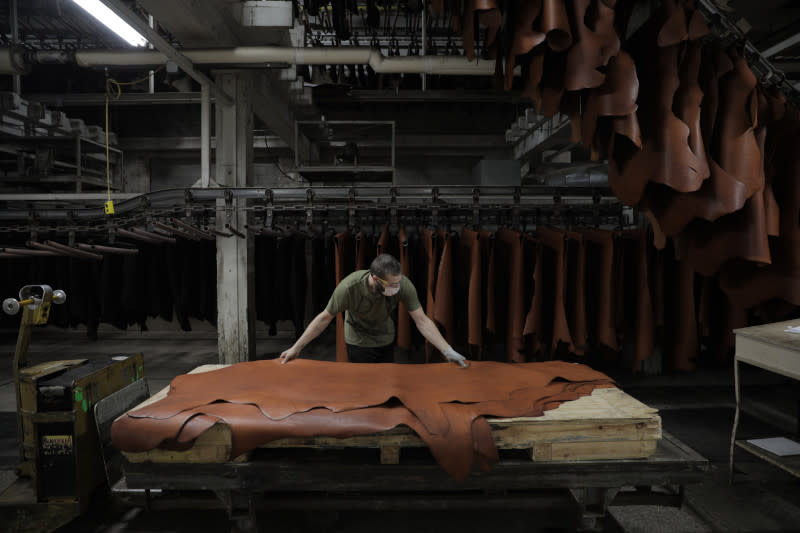
Larson said commitment to domestic production is important to Heritage customers as Red Wing discovered in a recent study of 200,000 customers and targets who rated Made in the USA very high on their criteria when prospecting a boot brand.
“We always assumed that was a nice-to-have, not a need-to-have thing, but for many people it is a deciding factor, and for consumers in Japan and Europe, it’s the No. 1 reason why our brand exists over there,” Larson said. “There are so many footwear brands in Europe that make great footwear, but where we’re unique and what sets us apart is that we’re made in the USA and that drives our brand in Europe and Japan.”
Shloop: Makers in Mississippi
In Mississippi, Shloop is getting ready to roll out its first shoe next month in what once was a bakery in Meridian.

Shloop co-founder Rachel Hunt said the company sees a “huge opportunity” to potentially be America’s first domestic sustainable footwear manufacturer, help the community and the state, and support a “domestic innovation hub” for other brands.
“We want that to go back into our economy instead of China’s,” she said.
The 30,000-square-foot plant, built with a $9 million capital investment, is expected to produce 56 jobs in the town of 34,000 93 miles east of Mississippi’s capital of Jackson.
The Shloop story begins with the project of fellow co-founder Ryan Hunt, then a University of Georgia grad school student who received a U.S. Department of Energy grant to turn algae into biofuels.
“[W]hen we started thermoplastic extrusion, we found the algae had thermoplastic properties, so we were able to blend the algae with other thermoplastics to reduce the amount of petroleum in that material,” Ryan Hunt, CEO and co-founder of Shloop, told Sourcing Journal. “And in the case where the thermoplastic is a compostable like a PLA or a PVA-T [foam], then the algae accelerates the rate of bio-degradation. In the case where it’s a durable polymer, like a polyethylene or polypropylene or something like that, the algae is used as a more sustainable alternative to petroleum-based raw material. That does not necessarily make it biodegradable, though.”
Maybe not biodegradeable, but foam made from algae blooms offered a sustainable alternative for the heavily polluting footwear industry, and in 2017, the patented technology company known eponymously as Bloom, partnered with London-based shoe company VivoBarefoot to create the first footwear molded from algae, based on Ryan Hunt’s post-grad work. Bloom next got in business with Adidas to manufacture in Asia, and before long Ryan Hunt realized that none of these big-name brands actually make their own shoes but instead rely on Asian mega-factories.
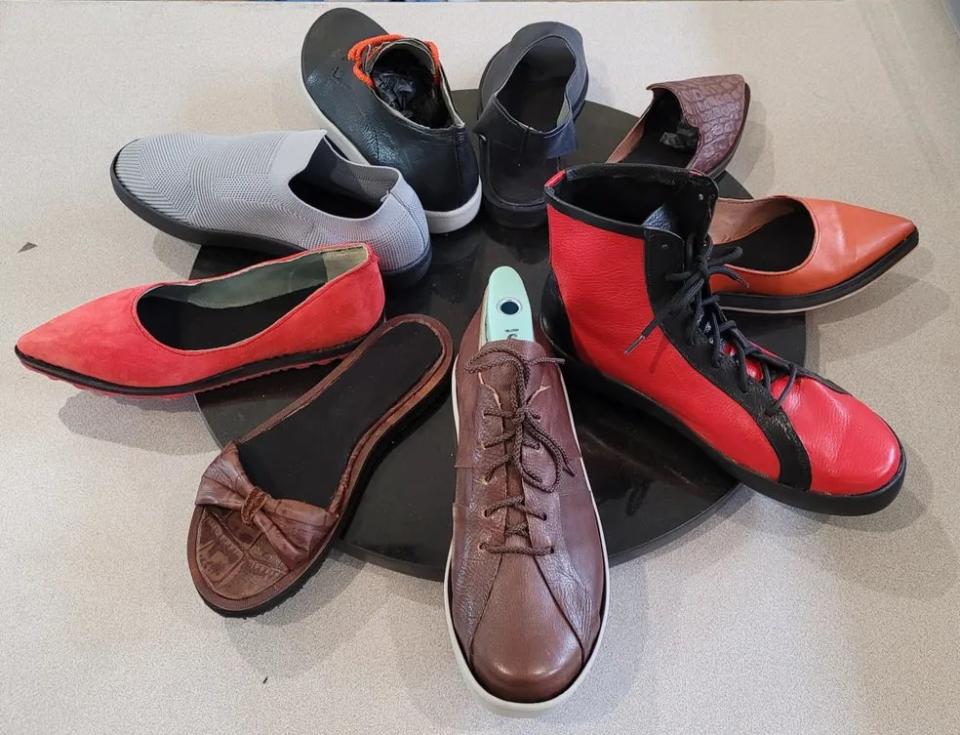
“And so we kind of found out the hard way that’s a really tough supply chain to bust into,” Ryan Hunt said. “Most of the factories didn’t really like doing business with American companies selling them an unusual product that would cost more than material they could find in their own country, probably through existing relationships.”
Then, along came the Trump administration’s escalating trade war with China, sustainability concerns, and finally, Covid and the resulting inflation and supply chain cataclysm.
“All these issues compounded to the point where it became a major risk for us to continue down a sole source path of only doing business with Asian factories,” Ryan Hunt said.
So, Bloom’s eye moved west to Europe, where the Bloom Pellet technology wound up being used in more than 60 factories, Ryan Hunt said. Then the Hunts and their two co-founders wondered if they could and should just manufacture their own shoes. Thus, the Shloop factory concept was born, its name a mash-up of “shoe” and “loop,” a wink to their commitment to circularity.
The founding quartet “built a business plan around putting sustainability first and basically building and curating a material library focused on local and sustainable materials that are not reliant on China,” Ryan Hunt said. Production runs will start small, even though that means declining some brands that want to hop on right away.
“We’re positioning ourselves and our technology in a way that will allow us to be cost-competitive with Asia through the fact that we don’t have to ship, don’t have the lead times, the MOQs—to allow brands to buy smaller amounts of shoes closer to market with a much more compelling and interesting story around their products,” Ryan Hunt said.
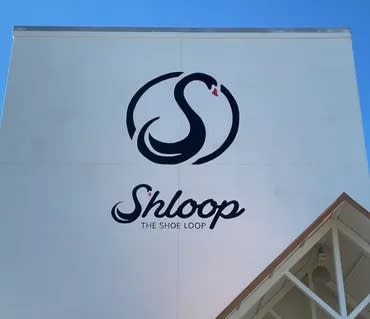
The Hunts’ travels exposed them to a number of entrepreneurs in plant-based leather alternatives and recycled materials, and by the end of this year, they expect to launch an in-house technology that will allow them to turn discarded shoes into new footwear.
Hunt is banking on his factory becoming a bastion for recycled footwear materials, especially due to the Chinese government’s recycling policies.
“China has banned the importation of recycled waste into their into their country,” Hunt said, which means “everyone’s kind of scratching their head at the moment saying, Well, if we can’t get our shoescrap back to the factories, how are we ever going to make a circular shoe?’”
Armed with a library of recycled and recyclable materials, Shloop finds itself searching for skilled labor in a town of 35,000 that doesn’t have the manufacturing history of a Farmington or Red Wing.
“Certainly people are…one of our biggest concerns and challenges, but luckily there are still people in Mississippi that want to work. There’s a lot of more blue collar labor in the area, there is a lot of sewing and sewing industries and manufacturing in Mississippi. So they’re the talent pool is here,” Ryan Hunt said. “With that said, we are incorporating a good deal of automation technology.”
Shloop is expected to create 56 jobs immediately as it estimates producing 150,000 pairs of footwear in its first year.
“At full capacity, this factory is going to do somewhere between 1 and 2 million pairs a year,” Hunt said. Shlopp is making “a different type of product, a different shoe made of different materials” and wants to “prove our point that we can do this here.”
“And if we can do it in Meridian, this can be done in other places in the country, as well,” Hunt said.

